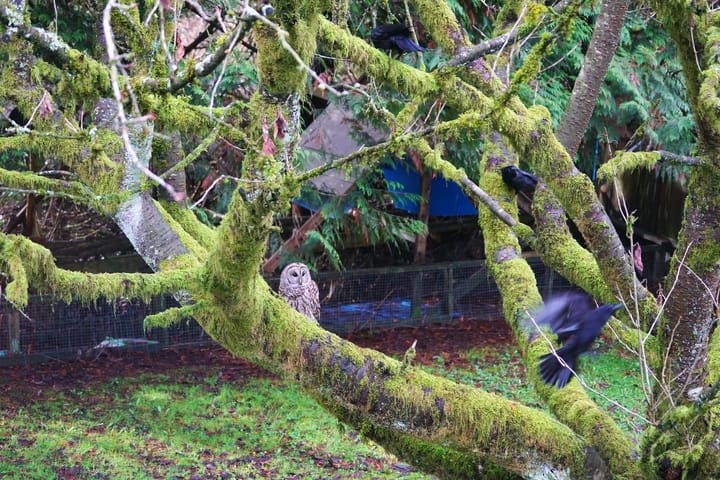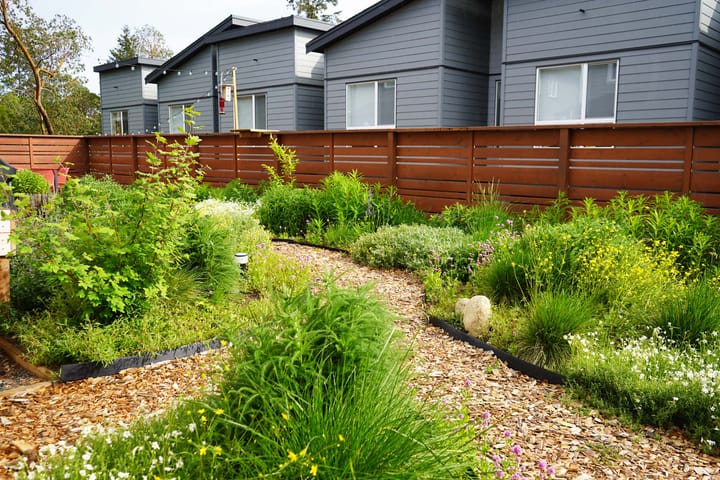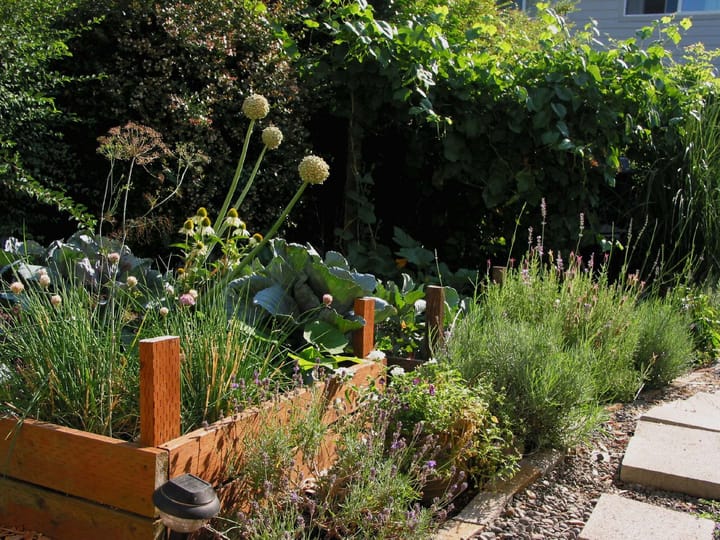We need to rethink how we feed wild birds
Birdseed has its place, but what threatened wild birds really need is more natural sources of food – in your backyard and beyond.

It must be a childhood right of passage to smother pinecones in peanut butter and roll them in a bowl of seed mix to make homemade bird feeders. I vividly remember seven-year-old me carefully hanging feeders in our willow tree and thinking I was an exceptional steward of the earth.
But as it turns out, this popular childhood activity is kind of redundant. Nature has already provided the food: the pine cone itself, which has seeds that many birds prefer and, conveniently, is already hanging from a tree. The adult version of this activity is a lot more helpful: planting conifer trees in your garden.
If you do, the birds will be grateful, says Gregor Beck, senior strategist at Birds Canada and the lead on their bird-friendly gardening initiative. “In addition to being a great food source, especially in winter, most (but not all) conifers are also evergreen, which provides excellent shelter and roosting places for birds.”
What wild birds really eat
Everything that birds really need is provided by a healthy ecosystem: berries, seeds, insects and other invertebrates. “Well-planned bird gardens provide natural food sources and water throughout the year,” says Beck.
It’s not as simple as planting a conifer and keeping finches happy for life. “Birds often have more than one favourite native plant for food,” says Beck. “[It’s] a smart survival strategy.” (Of course, the specific best species for you will depend on your local ecosystem, so research before you rewild.)

There are also a lot of variables, including the weather, what’s available, their biological needs and the needs of their young. “The types of foods birds eat vary widely by the species and even the season,” says Beck. “Many birds that eat seeds in winter will switch to insects in spring and summer.”
When planning a native plant garden, Beck tries to provide for as many species as possible by aiming for plants that will have fall and winter seeds or cones as well as berries or nectar. (Nectar itself isn’t the only reason birds might choose to visit a flower – often, they know that’s where they’ll find their favourite insects to munch on.)
In short, it’s diversity that makes for a well-planned bird garden, which is very different from what many people have always done: put seeds in a feeder and call it a day.

The trouble with birdseed
While giving birds seed isn’t necessarily wrong, it’s also not the most diverse, supportive way to invite local birds to your yard. And it comes with some major downsides.
It probably sounds like more work to switch from bird feeders to an entire garden of bird-friendly plants, but surprisingly, bird feeders aren’t low maintenance either.
“If people are going to have bird feeders, then it’s a commitment,” says Beck. “You have to keep feeders clean and also watch to keep the area around the feeders cleaned, too,” by raking the ground if there are spilled seed or shells. “Seeds can go stale or even moldy if they get damp or wet, or sit for long periods of time.”
It’s also important to thoroughly wash and sanitize your feeders periodically, advises Beck, and to change the sugar solution in hummingbird feeders frequently, especially in hot weather. This is true for bird baths and water features, as well. Keep them clean and add fresh water daily.


You also have to keep up with your local bird news, and we don’t mean listening to bird calls (though you can definitely do that too).
“Pay attention to local information about any avian diseases in the area,” says Beck. “While not common, there can be outbreaks of disease among birds and if they congregate around feeders there is potential for spreading. Check with bird and nature groups about this and heed instructions.”
Another commitment you need to make when using a feeder? Consistency. “It's important to keep feeding through the winter if you started early in the cold season,” says Beck.
Which brings us to the pros of bird feeders.
“The extra boost from your feeder could be particularly important in times of stress,” says Beck. “For example, if there is a big snow or ice storm, that’s likely when wild birds could use the assistance.” This is becoming even more important given the drought, wildfires and extreme weather that are happening more frequently due to climate change.
So are feeders bad overall? No. “Feeding wild birds with feeders is a great way for people to connect with nature at home and learn, and it can be helpful for birds during times of stormy weather,” says Beck. But “creating a bird and nature-friendly garden filled with native plants and a water feature is even better.”

The importance of local garden habitats for birds
Birds are facing many challenges, among them habitat loss, climate change and extreme weather events.
The good news: there is incredible value in our collective homes, cities and backyards for wild birds. We already know a native plant garden can provide food and water, but birds also need gardens to nest in, or to rest in during migration. “[Our gardens] can be a summer, winter or year-round destination for some birds, or a migration stop for others,” says Beck.
In the book A Garden for the Rusty-Patched Bumblebee: Creating Habitat for Native Pollinators, co-author Lorraine Johnson argues that we need to create habitat in places where we have “green-paved” with lawns. She believes, rightfully so, that even the smallest garden can make a big impact.
But how much does something seemingly so simple help? As it turns out, a lot.
“By planting a garden for pollinators, you will also be planting a garden for birds,” Johnson writes. “Not only do birds eat the seeds and fruits that are a direct result of pollination, but they also consume vast quantities of insects, especially caterpillars – the same beneficial insects you are attracting to, or increasing in, your garden by creating pollinator habitat.”

Beck is no stranger to how true this is. When he moved into his first home near Toronto, he immediately set to work replacing the small patch of lifeless lawn with native plants: trees, shrubs, small herbaceous plants. “I knew I was having success when hermit thrush and fox sparrow and many others started to visit, sometimes sticking around for days as a stopover during migration, or longer over the winter, like juncos.”
Beck lived in that house for more than eight years. During that time, he kept a log of birds that used his garden for food, water and respite. He spotted 82 species. If that’s the impact of one small native plant garden, imagine how many birds our collective efforts could help.


How to plan your bird garden
A garden never supports just one species. As soon as you have native plants, you have insects, and when you have insects, you have birds. It’s a life cycle, one that Johnson knows well. In her book, she suggests starting your native garden by assessing your site conditions and getting to know your region’s plants.
Once you’ve done that, you can think about what you can plant to help the most bird species possible.
“When you’re planning, try to think of providing food, water and shelter year-round,” says Beck. “That will benefit a great diversity of birds.”
You can also get more specific, by thinking of a native plants you love and finding out which birds they help – or, alternatively, thinking of the birds you’d love to attract to your garden. For example, near the shores of Lake Erie in Ontario, Beck has watched ruby-throated hummingbirds feed on wild columbine and oswego tea flowers.
The plants will vary by your region, and so will the birds. But one thing remains true no matter where you live. “As soon as you start creating and diversifying your garden, birds, pollinators and other wildlife will start appearing,” says Beck. “It’s amazing how fast nature will find your garden.”













Comments ()